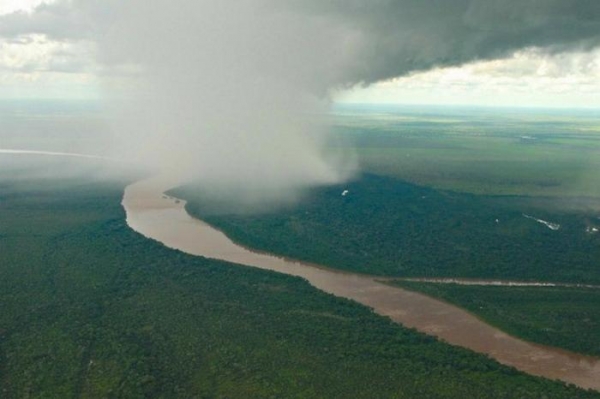A group of researchers at the State University of Campinas (UNICAMP), in São Paulo state, Brazil, has developed an algorithm that projects the future of vegetation in the Amazon, presenting scenarios for transformation of the forest driven by climate change.
A group of researchers at the State University of Campinas (UNICAMP), in São Paulo state, Brazil, has developed an algorithm that projects the future of vegetation in the Amazon, presenting scenarios for transformation of the forest driven by climate change.
One of the results shows that a drier climate in the region, with a 50% drop in precipitation, could increase diversity but lower the level of carbon storage. Storage of carbon dioxide (CO2) in roots would increase, but absorption of CO2 in leaves, stems and trunks, which have more storage capacity, would decrease. Taking different situations into account, the scientists calculate that carbon absorption could drop between 57.48% and 57.75% compared with regular climate conditions.
The algorithm, which is the first of its kind designed exclusively for Brazil, is called CAETÊ, which means “virgin forest” in Tupi-Guarani and is an acronym of CArbon and Ecosystem functional Trait Evaluation model. Its first results are described in an article published in the journal Ecological Modelling.
Read more at: Fundacao de Amparo a Pesquisa do Estado de Sao Paulo
The computer program was developed at the State University of Campinas to include more vegetation diversity in the analysis of climate change impacts (Photo Credit: Tiago Latesta/Projeto Brasil das Águas)




